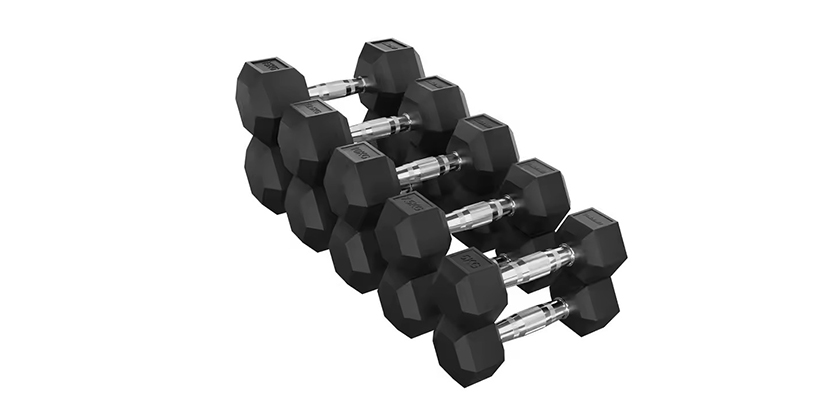Figuring out a chest and back workout with dumbbells had me stuck for a while. I wanted something simple that actually worked — no machines, no cables, just dumbbells and a bench.
After messing around with different routines, I finally found a few exercises that hit both muscle groups hard. If you’ve been wondering what dumbbell moves are really worth doing for chest and back, this is exactly what helped me.
Why Chest and Back Together?
I like doing a chest and back workout with dumbbells because it just works. It saves time, and it hits both sides of your upper body in one go. Chest pushes. Back pulls. Easy combo — and super effective.
Training both muscle and posture in the same session made a real difference for me. I wasn’t just chasing size or strength anymore — I started to feel more balanced overall. Every rep felt like it was doing double duty: building muscle and correcting how I carry myself. Here’s what each part mainly targets:
Chest muscles (push):
- Pecs (main chest muscle)
- Front delts (front of your shoulders)
- Triceps (they help lock out the press)
Back muscles (pull):
- Lats (the big, wing-like muscles)
- Traps (upper and middle back)
- Rhomboids (between your shoulder blades)
- Rear delts (back of your shoulders)
And with dumbbells, both sides of your body have to pull their own weight. Literally. No cheating, no uneven strength. That’s been a game changer for me.
How I Use These Moves in My Chest and Back Dumbbell Workout
These are the three exercises I always come back to for a solid chest and back workout with dumbbells. Nothing fancy. These are the three moves I keep circling back to for a solid chest and back workout with dumbbells. Honestly, they just get the job done — no wild equipment or complicated setups.
Anyway, it’s a super chill setup. Just a bench, a pair of dumbbells, and decent form. That’s it. And surprisingly, it still hits hard. So yeah, if you’re after something simple but effective, this is it.
Here’s how I do each move:
Incline Dumbbell Press
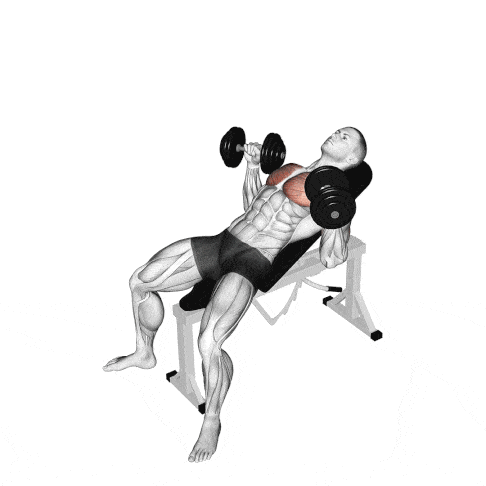
Exercise method:
- I set my bench to a 30–45° incline.
- I lie back with dumbbells in each hand, elbows bent.
- Then I press them up until my arms are straight.
- Lower with control — no rushing.
Muscles worked:
Mostly upper chest. Also hits the front shoulders and triceps.
Tip:
I keep my wrists locked and don’t let the dumbbells drift outward. That keeps tension in the chest and saves my shoulders.
Dumbbell Flyes
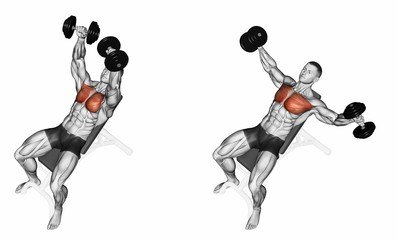
Exercise method:
- So, I lie flat on the bench and bring the dumbbells up right over my chest — arms slightly bent, nothing stiff. Then, slowly, I open up wide like I’m about to hug a big tree or something.
- Eventually, I feel that sweet stretch in my chest — that’s my cue to bring ’em back in.
- Altogether, it’s a smooth, controlled move — no jerking, no rushing.
Muscles worked:
This one’s all chest — especially the inner and outer pecs. A little front shoulder work, too.
Tip:
I go lighter on this one. It’s about feeling the stretch and the squeeze — not moving big weight.
Chest Supported Dumbbell Row
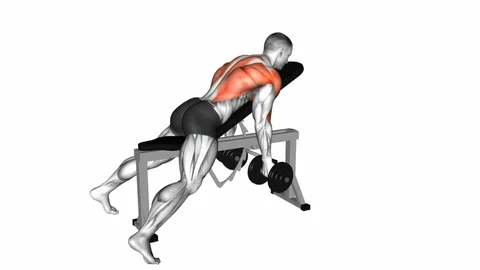
Exercise method:
- I set my bench at an incline again and lie face down on it.
- Dumbbells in hand, arms hanging.
- Then I pull them up to my sides, squeezing my shoulder blades together.
- Lower slow.
Muscles worked:
Mainly back — lats, traps, rhomboids, and rear delts.
Tip:
Honestly, I make sure to lead with my elbows and keep my chin tucked the whole time. Otherwise, if I start feeling it too much in my arms, then something’s off — like I’m cheating the move.
Beginner-Friendly Dumbbell Chest & Back Workout Plan
| Exercise | Sets | Reps |
|---|---|---|
| Incline Dumbbell Press | 3 | 8–12 |
| Dumbbell Flyes | 3 | 10–12 |
| Chest Supported Dumbbell Row | 3 | 10–12 |
3 Rounds — Rest 30–60 sec between sets
I keep this routine in my rotation whenever I want to hit upper body push and pull in the same session. If you’re short on time but want to train smart, this setup works.
This dumbbell chest and back workout became my go-to when I wanted something clear-cut but still tough. It’s no-nonsense and always manages to push me just enough to keep getting results.
Related Articles
6 Best Arm Workouts With Dumbbells For Next Arm Workout
6 Best Forearm Workouts with Dumbbells
7 Best Bicep Dumbbell Exercises Built My Arms
6 Best Dumbbell Tricep Exercises Boosted My Pressing Power
Barbell Curl vs Dumbbell Curl: Difference for Biceps Growth
Dumbbell Exercises for Rear Delts
Top Tricep Exercises with Dumbbells for Stronger Arms
3 Best Dumbbell Shoulder Exercises That Actually Work
3 Best Leg and Core Dumbbell Workout
6 Bench Dumbbell Workout for Full Body Workout
Are Adjustable Dumbbell Safe for Every Lift?
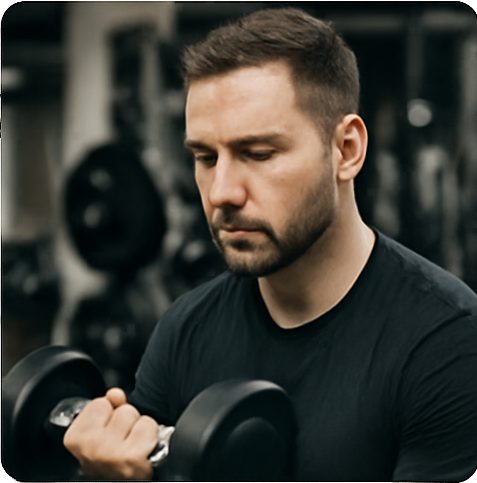
Hi, I’m the editor here at Leadman Fitness. We’re a manufacturer focused on producing top-quality barbells, plates, kettlebells, dumbbells, and strength training gear. I’ve been into sports and fitness for years, and I know my way around all kinds of gym equipment—both from using it and helping create it.
I spend a lot of time understanding the real problems people run into in the gym—whether it’s beginners trying to pick the right gear or experienced lifters looking for something more durable. I stay in close touch with our production team and talk directly with other equipment makers, so we’re always improving based on what real lifters and coaches are looking for.
What I share comes from hands-on experience—stuff that actually helps people train better, not just in theory, but in real gyms.
